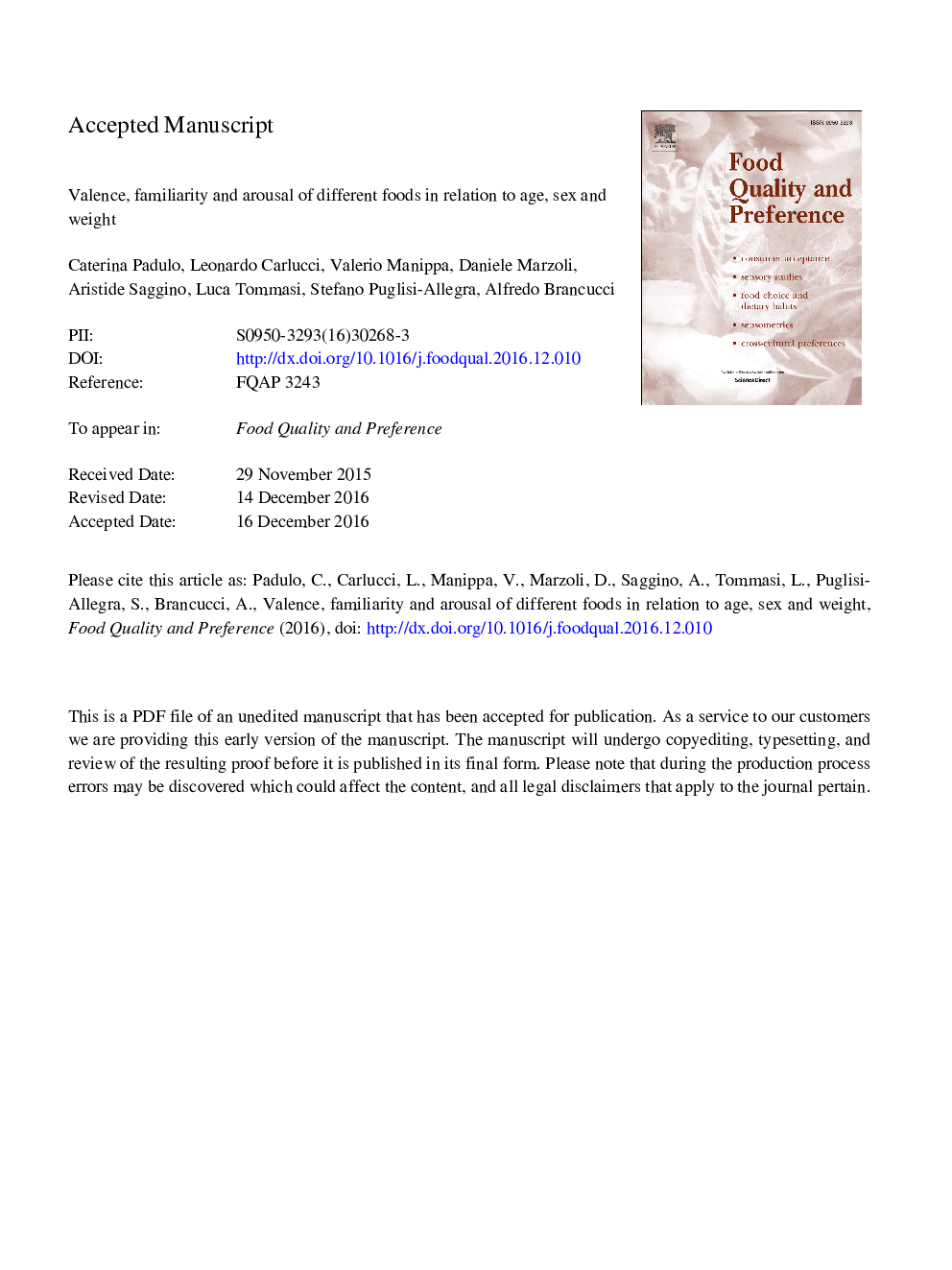| Article ID | Journal | Published Year | Pages | File Type |
|---|---|---|---|---|
| 5736068 | Food Quality and Preference | 2017 | 29 Pages |
Abstract
The main predispositions that constrain food preferences comprise the tendency to prefer sweet foods and to reject bitter foods, as well as to favor more familiar foods and rejecting novel foods. Much evidence indicates that preference for sweet taste is inborn and universally present in neonates and that it decreases during adult life. However, there are no clear findings regarding age-related changes during adulthood and in the elderly. In the current study we aimed to assess, in a large sample of healthy participants, ratings of food images by taking into account valence, arousal and familiarity judgments. Our results demonstrate a clear pattern of sweet taste valence and arousal attribution across the different age groups, that seems to decline up to early middle age and to increase thereafter, so that it is again present in elderly people. Such result could be accounted for by the fact that sweet foods might constitute a non-poisonous energy source and/or an immediate calorie supply for individuals with impaired energetic metabolism, providing new insights into the field of human food preferences. Moreover, gender and weight status differences were observed as regards preferences for specific food categories.
Related Topics
Life Sciences
Agricultural and Biological Sciences
Food Science
Authors
Caterina Padulo, Leonardo Carlucci, Valerio Manippa, Daniele Marzoli, Aristide Saggino, Luca Tommasi, Stefano Puglisi-Allegra, Alfredo Brancucci,
